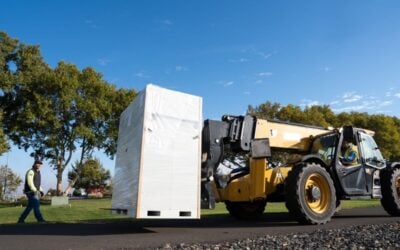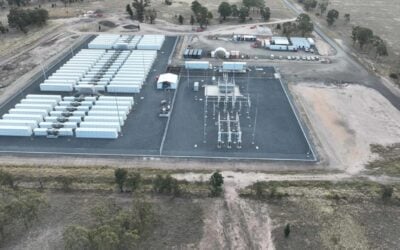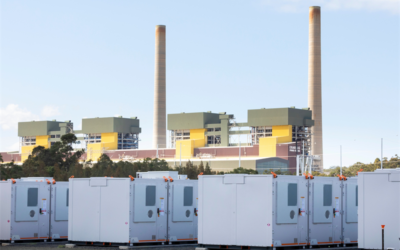
The Western Australian government has launched the first stage of an Expression of Interest (EOI) process for a 50MW/500MWh vanadium flow battery energy storage system (VBESS) in Kalgoorlie.
The Department of Energy and Economic Diversification (DEED) opened the EOI process on 24 November, and will remain open for submissions until 30 January 2026.
The VBESS project, backed by AU$150 million (US$97 million) in funding from the Cook Labor government, is part of a commitment to enhance power reliability in the Eastern Goldfields region while advancing Western Australia’s clean energy transition.
According to the government, the system is designed to deliver a 10-hour discharge capability, making it one of the longest-duration battery energy storage installations in the country.
Try Premium for just $1
- Full premium access for the first month at only $1
- Converts to an annual rate after 30 days unless cancelled
- Cancel anytime during the trial period
Premium Benefits
- Expert industry analysis and interviews
- Digital access to PV Tech Power journal
- Exclusive event discounts
Or get the full Premium subscription right away
Or continue reading this article for free
Energy and decarbonisation minister Amber-Jade Sanderson emphasised the project’s dual role in boosting power reliability in the Goldfields while supporting Western Australia’s clean energy objectives.
“We want to partner with industry to deliver local content, great jobs, and real value for Western Australia. A locally made and sourced vanadium flow battery will create jobs during construction, deliver improved energy resilience for the region and complement other planned upgrades in the Goldfields region,” Sanderson said.
The Eastern Goldfields region, which contributes approximately AU$19 billion annually to Western Australia’s economy, has faced reliability challenges in recent years.
Extended power outages caused by faults in the transmission network and suboptimal performance of backup generators have highlighted the need for robust energy infrastructure, the government said.
The VBESS is designed to address these challenges by providing long-duration storage that supports the region’s decarbonisation efforts and industrial growth.
Vanadium flow battery project slated for completion in 2029
The EOI process is structured in two stages. Stage one focuses on assessing market capabilities and gathering insights to inform the criteria for the subsequent phase. This initial stage is not a formal procurement process but aims to identify industry readiness and capacity to deliver the VBESS.
Respondents are required to provide detailed information about their organisational structure, experience in the vanadium and energy industries and their proposed approach to delivering the VBESS or supporting the local vanadium flow battery supply chain. Stage one assessment will commence in February 2026.
Stage two, scheduled for March to April 2026, will involve detailed business case evaluations to select a preferred proponent for the project. The successful respondent will be responsible for building, owning and operating the VBESS, with project completion targeted for 2029.
The stage two assessment is scheduled for May 2026, with the preferred respondent negotiations expected to commence in either June or July.
The government has indicated that financial support will be tied to the achievement of agreed project milestones and deliverables, to attract additional private investment into the local vanadium battery supply chain.
The VBESS specifications require the use of vanadium flow battery technology manufactured in Western Australia, utilising locally sourced and processed vanadium. This aligns with the state’s Battery and Critical Minerals Strategy 2024-30, which prioritises vanadium extraction and processing as key sectors for development.
Western Australia hosts some of the world’s largest vanadium deposits, and the government has reduced royalties on vanadium products from 5% to 2.5% to support the industry’s growth.
Vanadium flow batteries are particularly suited to Western Australia’s operating environment due to their durability, scalability and ability to maintain performance in high temperatures.
These characteristics make the technology ideal for the harsh conditions of the Goldfields region, where long-duration storage is critical for supporting renewable energy integration and system reliability.
Additionally, vanadium flow batteries present a lower fire risk compared to other technologies and offer recyclability of their electrolyte, further enhancing their appeal for utility-scale applications.
Boosting local vanadium supply chains in Western Australia
The VBESS project also aligns with the state’s Made in WA plan, which aims to catalyse local manufacturing capabilities and ensure that businesses, workers, and communities benefit from the energy transition.
Respondents to the EOI are encouraged to outline their approach to local industry participation, including investments in a vanadium flow battery supply chain and partnerships with local businesses.
The Kalgoorlie VBESS builds on Western Australia’s growing experience with vanadium battery technology. Horizon Power has already installed a vanadium flow battery in Kununurra as part of its microgrid trials, demonstrating the technology’s potential in remote and hot climates.
The VBESS project is expected further to validate the commercial viability of utility-scale vanadium flow batteries and provide a model for deploying LDES technologies across the South West Interconnected System (SWIS), Western Australia’s main power grid.
The SWIS, often described as the world’s largest isolated power system, is undergoing a significant transition from coal-fired generation to renewables supplemented by gas and storage.
Utility-scale battery storage is increasingly important for capturing abundant solar energy during the day and discharging it during evening peak demand. The Kalgoorlie VBESS, with its extended discharge duration, will support this transition by enabling greater integration of renewable energy and enhancing system stability.
The project is also expected to catalyse growth in Western Australia’s emerging vanadium industry, creating opportunities across the supply chain.
Interested parties can submit stage one responses electronically to [email protected]. The DEED will assess submissions and provide details about the next stages of the EOI process, which will include negotiations with the preferred respondent.





